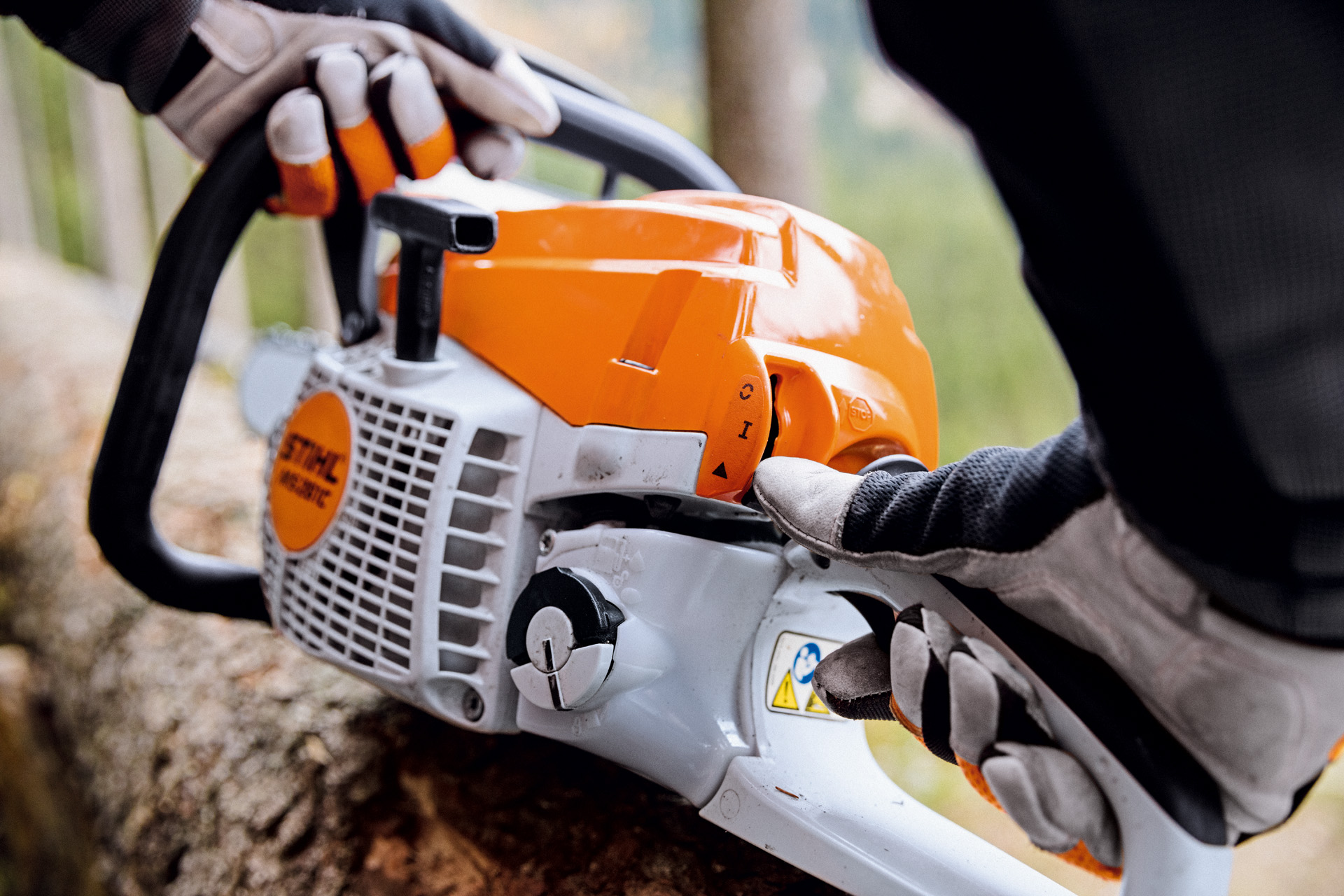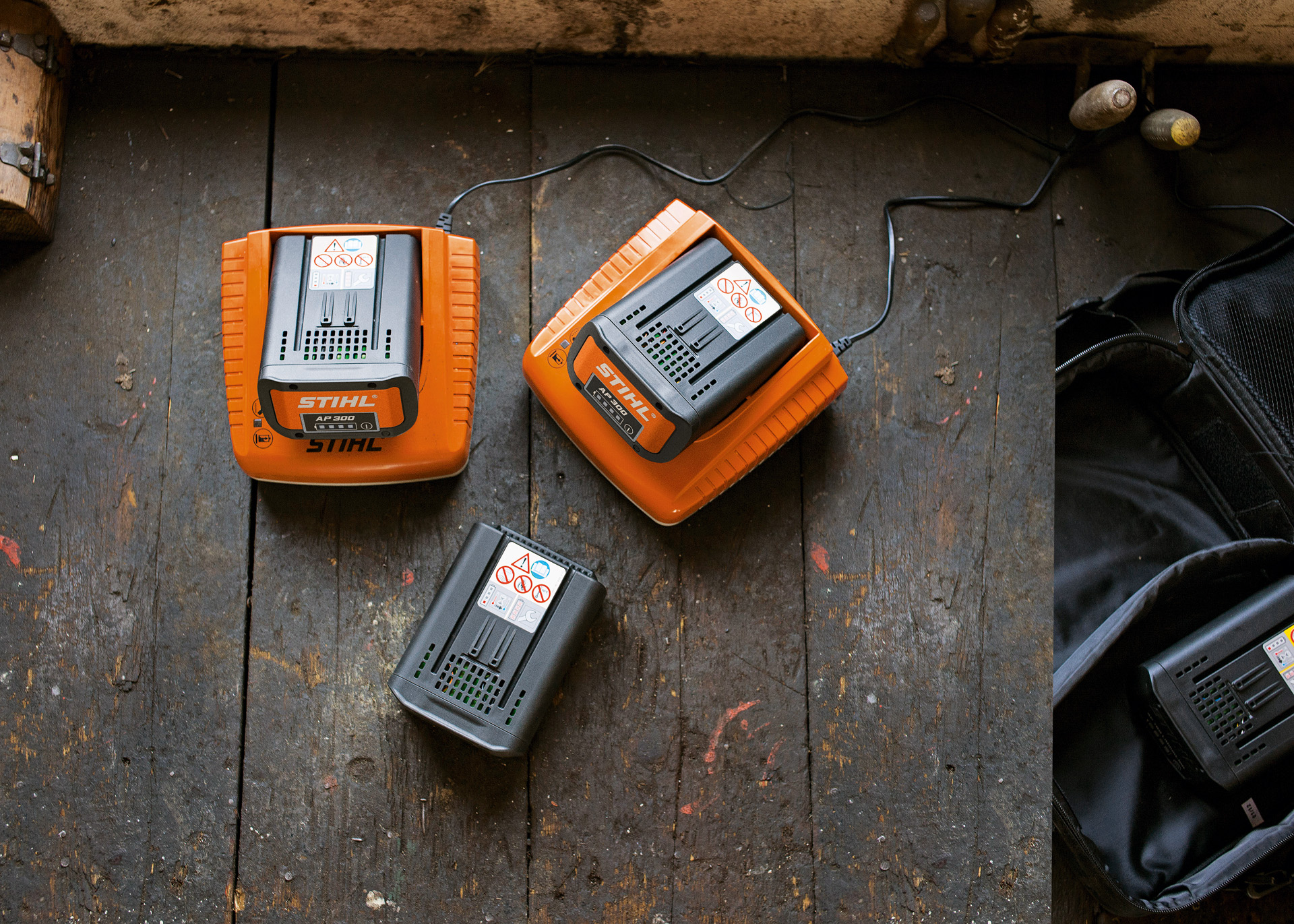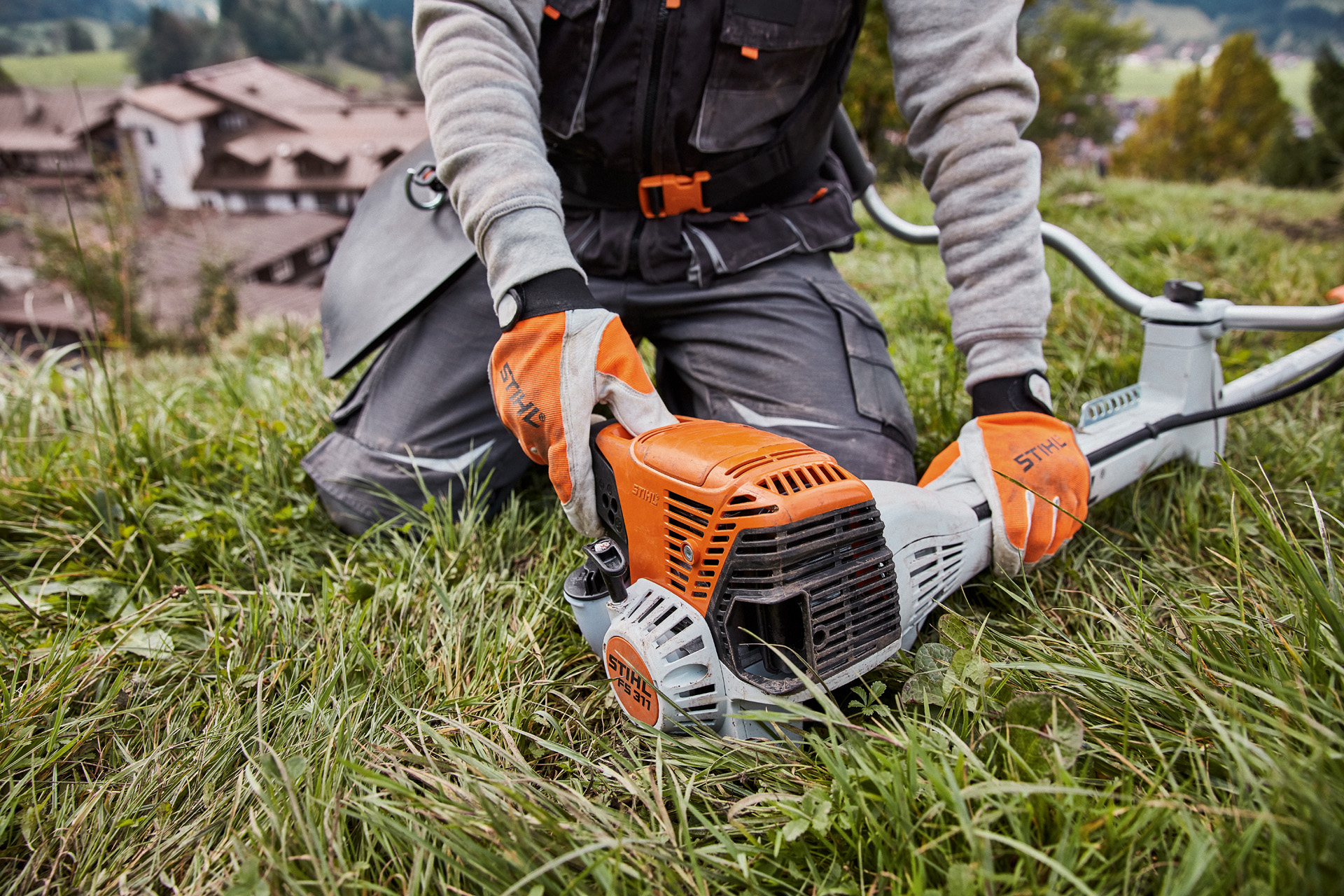STIHL research and development: delivering premium tools
The extensive STIHL Research and Development team focus on delivering innovation and quality in every STIHL product. Find out more about our testing processes here.
23.09.2024

How we deliver quality at STIHL
Our product range is as diverse as the work sites our tools are destined for so it takes a full spectrum of checks and development measures to guarantee our famous STIHL quality, whether in our innovative garden tools or our professional forestry equipment. Here's an insight into how we harness innovation in STIHL technology and use our research and development to deliver tools that help you get the job done quickly and efficiently.
Testing and innovation at STIHL
In Plant 2 at STIHL HQ in Waiblingen, Germany, the focus is on quality – around the clock. This is where all STIHL tools are tested for performance 24/7, from chainsaws and hedge trimmers to mistblowers; because innovation in a tool is no good without a long, reliable service life too. The plant has 36 specially constructed test cabins. These are fully technically equipped with fuel supplies and exhaust systems, so that our tools can run day and night in endurance testing. Each of our products is tested with around 150,000 hours of use based on an individual, meticulously detailed test plan, managed by our in-house test software. The software simulates typical operation of the tools by users: part throttle, full throttle, idle. We use the data from these tests to ensure the flawless, reliable operation of all of our tools.

We love to apply pressure to our products and innovations at STIHL. We use our hydraulic press on a huge variety of steel compositions, exerting 10 tonnes of pressure onto a tiny surface. This means we can test the characteristics of various alloys and make sure our cutting tools offer the right balance of hardness and resilience for perfect cutting performance.
Battery development is a particularly important area of innovation at STIHL. We develop our own batteries for use with our cordless systems, and are constantly enhancing the technology. Doing our own research and innovation in this area means we can perfectly adapt the running characteristics of our electric motors to the performance and energy capacity of the STIHL battery. That means you can be sure your STIHL tool will make optimum use of the energy in its battery and deliver the best possible performance. And we can continue to offer proven STIHL quality in the drive systems of the future.

STIHL tools are packed with power. But when this power is unleashed, it causes vibrations that are experienced by the user through the handles of our tools. We measure and work to reduce these vibrations in our STIHL research and development centre whilst still delivering the power you need. Our development engineers happily rise to the challenge, designing anti-vibration systems in which buffer elements and springs prevent the vibrations of the engine from being transferred to the handles. This means our tools are smoother to handle and a pleasure to use.

When you are working with a hedge trimmer or chainsaw for extended periods, you will notice how tiring the weight of the tool can be – every gram counts. That is why a significant part of our research and development efforts is continually focused on further reducing the weight of our tools. A key innovation in this area is the use of an ultra-light material that is also impressively robust: magnesium, which in its pure form is approximately one-third lighter than aluminium. Our die-casting processes, which take place in our factory in Prüm, Germany, enable us to form magnesium with extreme precision. STIHL can create almost any shape imaginable, so we can use die-cast magnesium in our petrol engines and hedge trimmer guides, for example.

STIHL research and development also means optimising engines and components, and flow simulation guides innovation in this area. Virtual simulated processes are used so that we can understand how to perfectly lubricate the engine compartment of a STIHL tool to minimise friction and wear inside it. Our engineers develop these simulations using 3D data generated in the design phase, so they can see how the fuel mix is distributed within the engine compartment and how it behaves. The rest of the effort is in conducting a complicated mathematical and physical formula that is used to calculate the movement of the liquid in the engine compartment. Once the process is complete, the engine components can be optimised so that the lubricant always ends up where it is needed.
STIHL products are used all over the world, and we believe that you should be able to rely on STIHL quality wherever you are – no matter what weather conditions you experience. That’s where our climate chamber comes in. We use it to test the starting and operation of our tools at extreme temperatures, from -30°C to 40°C. This climate testing means we can explore important questions: how does the fuel mix behave at different temperatures? Is the oil viscosity ideal? Do our fuels leave minimal residue when burned? How do our machines behave at dew point? We make all of these discoveries in our climate chamber, from where they are incorporated into products and guide our innovation.

With our noise measurement room we can monitor tool noise and make sure that our tools cause the minimum possible disturbance to people and the environment. For example, we measure sound pressure levels close to the user’s ear, to determine whether ear protection is necessary when using a specific tool. We also measure the sound power level on the external surface of the machine, to use as an indicator of the sound radiation within the surrounding area. Our tools all feature this value on their labelling.

We test STIHL quality and innovation beyond the comfort zone with the saw chain test, which evaluates our saw chain performance under real-world conditions. Testing under real-world conditions means that the wood we use is damp. We moisten the wood with a special irrigation system in order to realistically simulate cutting conditions. Our computer-assisted measurements then compare the real performance of our STIHL saw chains with the specifications provided by our research and development department. Here, the testers are particularly interested in the cutting performance in the wood and the chain speed on the bar.

STIHL innovation and quality also means we expect our machines to perform well even in challenging situations. Our dust chamber is an important asset for testing this: dust is stubborn, gets everywhere and can play havoc with mechanical and electrical devices if not minimised and managed. But our dust chamber creates a worst-case scenario: inside it, we deliberately create an intensely dusty atmosphere, for example by using a cut-off machine to cut stone slabs. At the same time we have other tools running in this atmosphere, taking in the dust-saturated air. After a while, we switch off the tools then closely examine the air filter and the interior of the tools. From these observations we can understand how air filters should best be constructed to effectively keep dust out of the engine. Because the only way to ensure optimum engine performance is with clean, particle-free air.

At STIHL, a lot of research and development goes into our fuels and lubricants, as we develop most of these in-house. Our engines will only perform at their best with high-quality fuels and lubricants, so we prefer to formulate our own, bearing in mind some important questions: how can we make sure our fuels leave minimal residues when burned? How can we deliver a good result with a cold start? How biodegradable is the product? How viscous are our oils at various temperatures? We find out the answers to these questions and then develop the optimal compounds. We maintain our own laboratories, where our specialists work hard in the areas of development, innovation, research and testing.

We ensure the quality of STIHL products in a wide variety of ways, one of which is material testing under a scanning electron microscope. Under these powerful microscopes the alloys and materials we use at STIHL look like mountainous landscapes. Using magnification up to 10,000x, we can identify the causes behind a fracture – because the edges of a fracture look different depending on whether it is caused by a heat treatment error or a weakness in the material. With the micrographs of different metals and metal alloys that we make, we can even identify the individual crystals that typically occur in alloys. We are always increasing our knowledge about materials, their properties and their behaviours, which ultimately helps us with innovation as well as choosing suppliers.
At STIHL, we are not focused solely on developing new tools, but also researching how to protect the people who use them. We have developed a range of work clothing made from cut protection fibres. These high-tech fibres are very long, fine and, most importantly, cut resistant. They are incorporated into multiple areas in our cut protection clothing, so if a chainsaw penetrates your cut protection trousers even once, the saw teeth of the chain will pull out long, tough fibres; these will wrap around the drive sprocket of the saw chain within milliseconds and stop it from moving. As part of our research and development approach, we test the functionality of the fibres in-house under real-world conditions for our new models and prototypes. So we have well-established expertise at the crossover of textile science, a deep understanding of tools and precise knowledge about user conditions. Textiles that meet cut protection standards such as DIN EN 381 or DIN EN ISO 11393 are identified by a specific pictogram that appears in our catalogues and brochures. STIHL only conducts testing with reputable institutes in Europe with most stringent requirements. That is why you can rest assured that any cut protection textiles you purchase from STIHL will offer reliable, rigorously tested cut protection.

System weight at STIHL
For professional users, every gram of weight counts. That is why STIHL invests a significant amount of time and engineering know-how to reduce the system weight of our tools, i.e. the weight of the unfueled chainsaw including cutting assembly. This has resulted in significant weight savings thanks to slimmer sprocket covers, redesigned cylinders, consistent material changes for other components and the development of lightweight rails – without, of course, compromising on power and durability. The result: a lower system weight and easier handling.
Working in the rain with professional battery products
All battery-powered tools within the STIHL AP system are designed for professional users and for daily use even under adverse weather conditions. For this reason, they are equipped with tested splash water protection. Their effectiveness is proven by demanding internal tests. The splash water test is based on the IPX4 standard, among other things.
Summary: STIHL research and development
- STIHL R&D ensures that the components of our tools are perfectly attuned to each other and therefore offer optimal performance
- STIHL quality is ensured with a wide range of testing techniques


